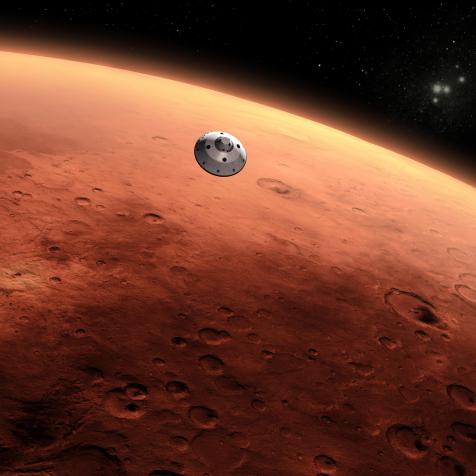
Gulgun Ulusoy
We Might Smell Life Before We See It

It’s a tough game to determine if a distant planet orbiting some nameless star hosts life on it or not. You can’t just walk up to it and start flipping over rocks or poking into the dirt. You can only use your telescopes, and the planets are so extremely distant that you can’t see the surface itself.
So researchers have come up with a new way: check for methane in the atmosphere. A lot of it.
Methane is a pretty special little molecule. Many processes manufacture methane in great abundance: volcanoes, undersea vents, the works. But it’s also fragile, and if methane hangs out in the atmosphere for too long, eventually UV radiation from starlight will break it apart. So any source of methane won’t be able to seriously affect the chemistry of a planet’s atmosphere for very long.
But life…life is a different story. All sorts of biological processes produce tons of methane. And what’s awesome about life is that it just keeps on living, cranking out the methane. If there’s enough life on a planet (like there is on the Earth), then the amount of methane in an atmosphere will stabilize, with life constantly replenishing what’s lost to sunlight.

Photograph taken by Alan Hopps
Lots of life on earth produces methane.
The key to spotting methane on another planet is to wait for a very precise alignment. If the planet happens to cross in front of the face of its star from our point of view, then for a little bit of time the star’s light will pass through the planet’s atmosphere before continuing its journey to our telescopes. Whatever molecules exist in that atmosphere will affect the starlight, altering the light in subtle ways…but ways that we can detect.
Indeed, this is one of the primary missions of the James Webb Space Telescope: to hunt for signs of life in the atmospheres of alien worlds. Methane is a great candidate because it’s easier to detect than that other famous life-generated element, oxygen.
There’s more to the methane, story, however. By itself, methane won’t be a sure-fire sign of life, because astronomers can concoct a variety of complicated scenarios where non-biological processes keep the methane levels up in an atmosphere. That’s why it’s so important to look for more than one signature of life.
JWST Journey to Space
Why NASA’s New Super-Telescope Can’t See Visible Light
Even though NASA’s latest flagship instrument, the James Webb Space Telescope, is touted as the successor to the venerable Hubble, it has one major difference.
James Webb Space Telescope Successfully Reached Its Final Destination
Nearly a month after the James Webb Space Telescope launched from French Guiana on December 25, the telescope has reached its final destination–almost a million miles from Earth.
All Aboard the James Webb Space Telescope!
All hail the James Webb, the ultra-powerful super-telescope for the next generation. Or for about 5-10 years when its fuel runs out.
For example, it’s extremely difficult for non-biological processes to generate large quantities of both methane and carbon dioxide, while simultaneously keeping levels of carbon monoxide down. Life, however, does this with extreme ease, because life generates methane and carbon dioxide as byproducts, and consumes carbon monoxide.
If astronomers using the James Webb find an abundance of methane in some alien atmosphere, we won’t be able to rush out right away and say that we’ve found evidence for extraterrestrial life. But it will definitely be a good, if smelly, place to start.
Dive Deeper into the Universe
Journey Through the Cosmos in an All-New Season of How the Universe Works
The new season premieres on Science Channel and streams on discovery+.













































































